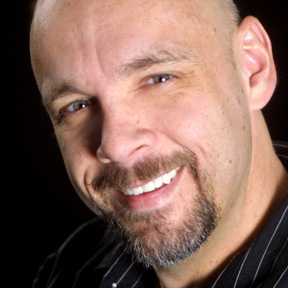The Critic's Corner
August 29 - September 4, 2016
‘Hell or High Water’ best of the year so far
By David Laprad
What in Sam Hill is “Hell or High Water” doing buried in the suck pit of August? Late summer is a dumping ground for movie studios with product they regret – films that should not have been made and no one wants to see. Yet “Hell or High Water” is easily the best film of 2016, and it sets a bar that won’t be easy to top.
Every aspect moviemaking is executed with brilliance and precision in “Hell or High Water.” The script by Taylor Sheridan is a work of art, a collection of words so carefully considered and skillfully assembled, it has the feel of good literature. Director David Mackenzie rose to the challenge of these pages to deliver a film so beautifully framed and shot, stills from the movie could be hung in a museum. And the performances by its principle actors – Jeff Bridges, Chris Pine, and Ben Foster – would be legendary if “Hell or High Water” were a classic released in another era.
Then again, “Hell or High Water” couldn’t exist in another time. It’s a movie painted with the dust of the American Dream and set against a landscape of economic ruin so severe, it threatens to summon the ghost of “The Grapes of Wrath.” It’s also a Western dressed in modern clothes. If the Western is dead, as has been rumored for decades, then “Hell or High Water” is its resurrected corpse, risen to tell a new story in an old way.
That story is the essence of pulp. Pine’s Toby is a divorced father who wants to give his sons a better life than the one he’s had. Together with his ex-con brother, Tanner, he plans a series of heists at the chain of banks that’s attempting to foreclose on the family ranch. But Marcus, a Texas Ranger on the cusp of retirement, stands in their way. A final string of robberies will bring these brothers into a showdown with this crafty lawman, who’s not quite ready to ride off into the sunset.
When I learned that Sheridan was the screenwriter of “Sicario,” I smiled. Both films contain dialogue full of flavor and snap, but also substance. In the case of “Hell or High Water,” Sheridan added humor to the mix:
Tanner: “Why did you bring me Mr. Pibb? I asked for Dr. Pepper.”
Toby: “It’s all they had.”
Tanner: “Mr. Pibb is for assholes.”
Toby: “Drink up.”
With “Hell or High Water,” Sheridan does more than string together lines that sound like poetry posing as prose; he uses dialogue to define his characters and their relationships, and to tell the story without explaining it. The exposition takes place before the film begins; Sheridan trusts us to listen to what his characters say to pick up on the details.
Likewise, Mackenzie trusts us to watch. Hell, I didn’t want to blink. The director sets the tone in the movie’s opening moments as the camera lingers on a spray of graffiti near the first bank the brothers hit: “Three tours in Iraq but no bailout for people like us.” Mackenzie then takes Toby and Tanner driving across a sprawling landscape of industrial rubble, broken down gas stations, and rusty scrap yards. The remains of an oil refinery in one series of shots look like tombstones set against an empty horizon.
Mackenzie’s framing is just as exquisite as the choreography. A shot of Tanner, arms resting on a rickety fence as he looks over the wasted expanse of his mother’s ranch, reminded me of how much can be said with a single, thoughtfully composed image. For me, movies like “Hell or High Water” pose the best argument for seeing films in a theater. That one shot contains breadth, scope, and meaning that might be lost on a small screen.
As good as “Hell or High Water” looks, the actors command the most attention. Pine delivers a performance I didn’t know he had in him. His work on the “Star Trek” films shows he has charisma, but here, he proves he has acting chops, too. That said, Bridges steals the film with his spirited portrayal of Marcus. You can almost hear the creaking of his old bones as he struggles to rise off a bench, and see the fire in his eyes as he figures out what the brothers are doing. His good-natured ribbing of his partner, a man of mixed Native American and Mexican blood, is one of the movie’s biggest pleasures. Bridges has been around for decades, but like his character in “Hell or High Water,” he’s far from ready to ride off into the sunset.
That’s twice I’ve mentioned one of the most iconic images in Western films. Even a casual study of “Hell of High Water” would reveal many more. Perhaps the most obvious is the showdown at the end, which doesn’t play out as I expected. Instead, Mackenzie and Sheridan take the Western trope of the shootout at high noon and subvert it for their own use. Above all, “Hell or High Water” shows us, as film critic David Edelstein of Vulture wrote, that there are “new stories [to be found] in old places.”
“Hell of High Water” is a superb film and a deeply rewarding viewing experience. It might take work to find it, but it’s worth the effort. Just don’t let its August premiere scare you off.
Four stars out of four. Rated R for strong violence, language, and brief sexuality,
David Laprad is the assistant editor of the Hamilton County Herald and an award-winning columnist and photographer. Contact him at dlaprad@hamiltoncountyherald.com.



